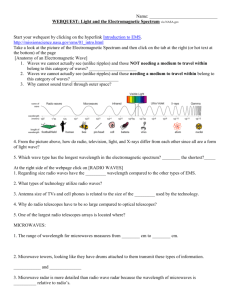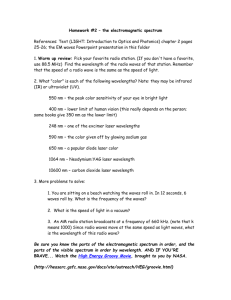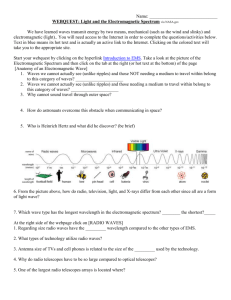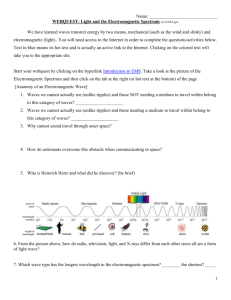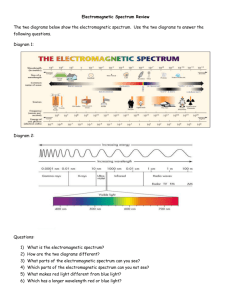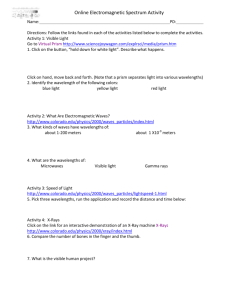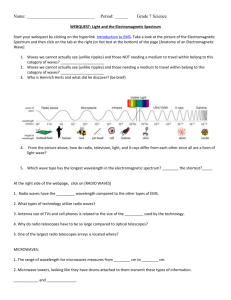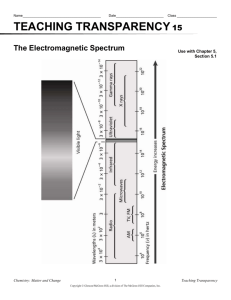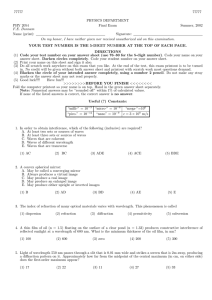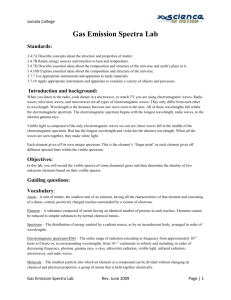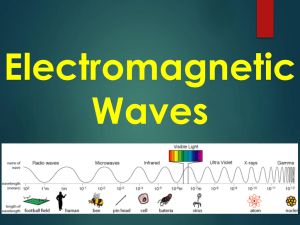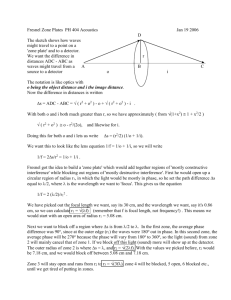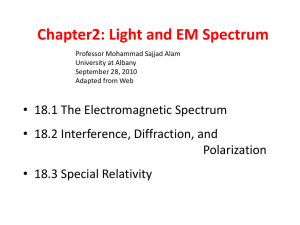Electromagentic waves
advertisement
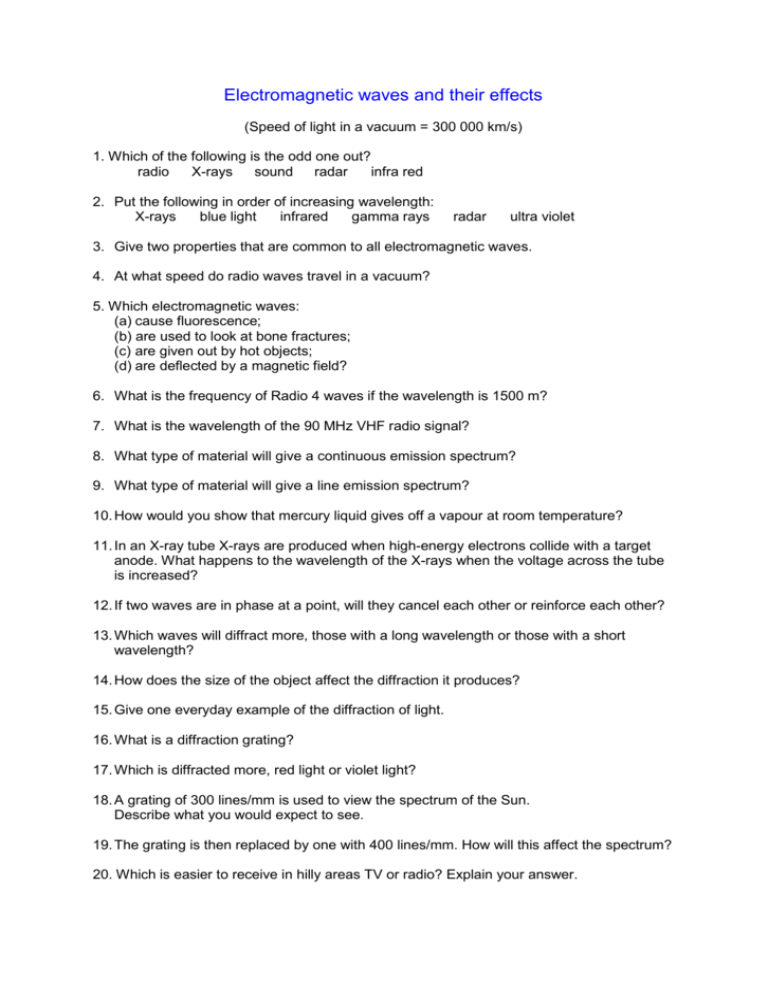
Electromagnetic waves and their effects (Speed of light in a vacuum = 300 000 km/s) 1. Which of the following is the odd one out? radio X-rays sound radar infra red 2. Put the following in order of increasing wavelength: X-rays blue light infrared gamma rays radar ultra violet 3. Give two properties that are common to all electromagnetic waves. 4. At what speed do radio waves travel in a vacuum? 5. Which electromagnetic waves: (a) cause fluorescence; (b) are used to look at bone fractures; (c) are given out by hot objects; (d) are deflected by a magnetic field? 6. What is the frequency of Radio 4 waves if the wavelength is 1500 m? 7. What is the wavelength of the 90 MHz VHF radio signal? 8. What type of material will give a continuous emission spectrum? 9. What type of material will give a line emission spectrum? 10. How would you show that mercury liquid gives off a vapour at room temperature? 11. In an X-ray tube X-rays are produced when high-energy electrons collide with a target anode. What happens to the wavelength of the X-rays when the voltage across the tube is increased? 12. If two waves are in phase at a point, will they cancel each other or reinforce each other? 13. Which waves will diffract more, those with a long wavelength or those with a short wavelength? 14. How does the size of the object affect the diffraction it produces? 15. Give one everyday example of the diffraction of light. 16. What is a diffraction grating? 17. Which is diffracted more, red light or violet light? 18. A grating of 300 lines/mm is used to view the spectrum of the Sun. Describe what you would expect to see. 19. The grating is then replaced by one with 400 lines/mm. How will this affect the spectrum? 20. Which is easier to receive in hilly areas TV or radio? Explain your answer.



